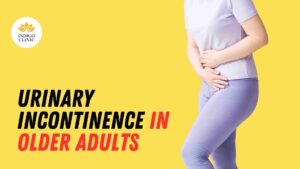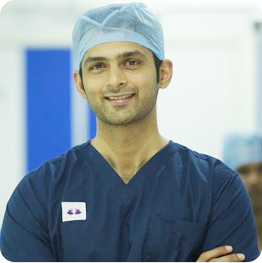


Introduction:
The term “carboxytherapy” today denotes predominantly the utilisation of CO2 gas in
injection form. Carboxytherapy therapeutically applied carbon dioxide injections have been used in balneotherapy since 1932. In the last two years, however, this treatment modality has become the centre of attention as a unique method applicable in dermatology, aesthetic dermatology and anti-aging medicine.
CO2 and its transport in bodily tissues:
Physiologically, the human body produces approximately 1.0 kg of CO2 a day.The arterial system shows only a low concentration.Mechanism of action of CO2 due to the Bohr effect The Bohr effect is a physiological phenomenon first described in 1904 by the Danish physiologist Christian Bohr, stating that
haemoglobin’s oxygen binding affinity is inversely related both to acidity and to the concentration of carbon dioxide. An increase in blood CO2 concentration which leads to a decrease in blood pH will result in haemoglobin proteins releasing their load of oxygen.Stimulated immunogenesis and repair processes in inflammation affected area, as well as
better mental performance are observed. This means that in physiological concentration, CO2 is necessary for the normal functioning of the human body, due to regulation of cellular respiration, maintenance of homeostasis and acid-base equilibrium, angiogenesis, andimmunity.Carbon dioxide baths stimulate the synthesis of testosterone and estradiol, and are used with success to treat sexual dysfunction in men (erectile dysfunction) and to alleviate the
symptoms of menopause in women.
General indications of carboxytherapy:
• Orthopaedic medicine and physiotherapy to manage pain, condition after traumas, arthritis,
acute and chronic back pain and pain in other areas (due to the hypoalgic effect of medicinal
CO2 )
• Neurology to manage patients after encephalitis, Parkinson’s disease, vegetative dystonia,
or polyneuropathy
• Gynaecology to treat oligomenorrhea and amenorrhoea
• Urology to manage erectile dysfunction associated with microangiopathy
• Rheumatology to reduce painful muscle irritation
• Angiology, phlebology, diabetology to improve blood circulation in tissues in acrocyanosis,
Raynaud’s disease, Buerger’s disease, or arteriopathy
• Wound healing in chronic venous insufficiency with lower leg ulcerations, diabetic wounds
• Sports medicine
• Balneology
• Lymphology to improve oedema
• Surgery to accelerate healing after skin Implants, carpal tunnel surgery, Dupuytren’s
contracture
• Psychiatry to manage panic attacks and foster convalescence and regeneration in persons with carcinoma.
•Dermatology to treat alopecia, small localised psoriatic foci, keloid and burn scars, stretch
marks, lichen ruber planus and hypetrophicus, onychorrhexis .
• Aesthetic medicine and aesthetic dermatology to improve skin elasticity, in anti-ageing
therapy to promote rejuvenation, smooth out wrinkles on the face, neck, and lower neck,
tighten lax skin on the chin, arms, abdomen, in body contouring after liposuction, lipolysis or
other aesthetic procedures, and to treat cellulite, and to reduce oedema and dark circles under
the eyes .
General contraindications of carboxytherapy:
Ischemic heart disease
Acute embolism
Thrombophlebitis and phlebothrombosis
Gangrene
Renal failure
Untreated high pressure
Stroke
Pregnancy & lactation
Severe adiposity with a BMI above 25
Acute infectious disease
Fever
Excessive blood clotting
Usage of anti-coagulants, hysteria, or fear of needles.
On the day of carboxytherapy administration the patient must not be diagnosed with an acute
infectious disease or infectious inflammatory skin disease such as impetigo, herpes simplex or herpes zoster, have increased body temperature or fever.
Devices used in carboxytherapy:
Small handy devices look like pens and allow for continuous administration.Their advantages is size, however, they often are too heavy to be held in one hand during longer sessions.
Regulations and requirements related to CO2 gas administration in medicine:
The regulations are very strict, medicinal CO2 gas is only supplied by licensed companies.The CO2 gas used in carboxytherapy devices must be sterile, must not contain more than 1% oxygen, must not contain more than 4% nitrogen, must contain more than 95% CO2 , and must be chemically and biologically harmless.There are two types of administration and each of them has its advocates and opponents.Many centres use devices adjusted according to purpose, whereby the gas applied either waywill spread in adjacent tissues, the variable being the administration time.Continuous administration and bolus administration of CO2.
Continuous administration is a technique of gradual administration of a predefined amountof CO2 in certain localities (intradermal administration), under the skin (subdermaladministration) and into deeper structures .
Continuous administration is preferred by some experts also when treating the face, neck,and decolletage.
The disadvantage is the longer injection interval.
Bolus administration of CO2 is the administration of certain predefined bolus doses of CO2 into predefined localities. The session takes less time and is more comfortable for the patient,especially when treating more extensive or sensitive localities.The needles used are usually 30G mesotherapy needles, whereby the selected length depends on the erudition of the physician.To treat skin laxity, stretch marks on abdomen and lower abdomen, knees, and cellulite the
recommended length of the needle is 12 to 13 mm. To treat the face, wrinkle, dark circles under the eyes, hand dorsae, atrophic scars, neck, and lower neck the recommended length of the needle is 4 to 6 mm.
The needle should be replaced after 8 to 10 injections and it is necessary to consider the sensitivity of the individual patient, as in very sensitive patients local anaesthesia or cooling is recommended, the needle must be replaced more often, and the flow CO2 should bedecreased.
Before carboxytherapy: for at least 3 days adhere to a proper drinking regimen (drink 2-3
l/day).After carboxytherapy: on the day of administration and 3 to 5 days after the procedure it is inevitable to increase the intake of liquids such as still water and tea.If undesired sensations occur, contact your physician.It is necessary to abide by the above rules, stick to a well balanced diet, refrain from smoking and drinking alcohol, and exercise.It is also good to refrain from overusing analgesic drugs.Sometimes patients report stinging or burning sensation, and itching, however, these sensations also resolve within a couple of minutes.Slight skin tension (when CO2 penetrates into the tissue) and oedema may occur, however,these also resolve within a few seconds.
Undesired effects after the treatment session:
Immediately after the treatment patients report the sensation of heat, tingling, and sometimes
burning (probably due to the influence of CO2 on the depolarisation of nerve membranes).Such sensations usually resolve very soon, and the prolonged heat sensation due to vasodilatation resolves within 10 to 20 minutes.Only in sensitive persons the given sensations persist up to 24 hours after the treatment
session.If a vessel is hit accidentally, minor hematoma may develop.Ecchymosis, a subcutaneous spot of bleeding, is reported in 5% cases.Exceptionally, in case of administration in the periorbital area, oedema may persist for more than 48 hours.
Planning the frequency and number of treatment sessions:
There are basic rules and recommendations related to the number and frequency of treatment
sessions, but every patient needs an individual approach depending on the treated locality and
their requirements, usually 5-20 treatment, sometimes more.
Durability of results obtained with carboxytherapy:
The results will last depending on the lifestyle of the patient. In patients with a healthy lifestyle who drink enough water, refrain from smoking and only drink moderate amounts of alcohol, eat healthy and exercise the results will lasts for several months to years.
On the average, after 5 to 6 months without maintenance therapy it is possible to observe the
skin returning to its original condition.
Gynaecology:
Decreased blood supply to the genital area, secondary atherosclerosis, and decreased pelvic blood flow through the ilio-hypogastric-pudendal arterial bed, are factors that play a role in the development of vaginal insufficiency syndrome, anorgasmia and female sexual
dysfunction.Aesthetic female genital surgery performed to correct the appearance of female genitalia is now becoming increasingly popular at several clinics.Virginal rejuvenation using carboxytherapy has caught the attention of many experts especially due to the fact that it is non-invasive. The administration of CO2 gas improves
blood supply to the pelvic floor and normalises vaginal flora, minimises dryness of vaginal mucosa, revitalises the colour of the vulva, positively influences sexual ageing, and helps manage urinary incontinence.
The administration of CO2 gas in gynaecology and balneology has been recommended as secondary therapy to support the treatment of amenorrhea or oligomenorrhea.
Conclusion:
The advantages of carboxytherapy: in adequate indications, this method seems to be absolutely versatile, safe, physiological, selective, and minimum invasive, covering a very broad therapeutic range. The method is not money consuming, and thus very affordable for the patient, however, the disadvantage is the necessity to repeat the application.
